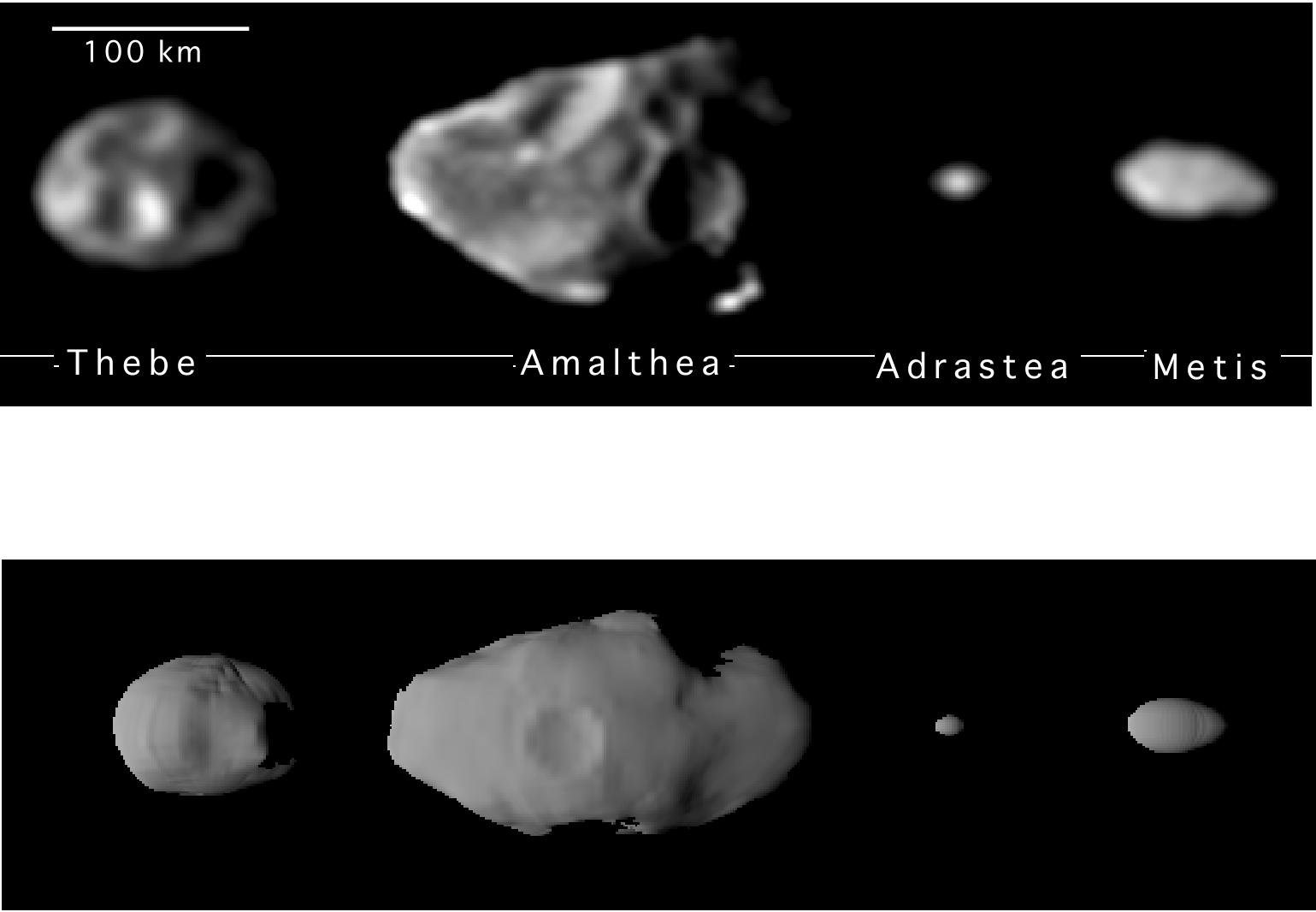Shapes of the Small Inner Satellites of Jupiter

| Credit | NASA/JPL/Cornell University |
|---|---|
| PIA Number | PIA01642 |
| Language |
|
The upper series of images represents the best yet of the four small inner satellites of Jupiter taken by the camera on NASA's Galileo spacecraft. From left to right, in order of decreasing distance to Jupiter, are Thebe, Amalthea (the largest moon), Adrastea (the smallest), and Metis. The images represent the first time that the shapes of Adrastea and Metis have been resolved by a spacecraft camera.
The views are presented at a common scale but were taken at somewhat different original resolutions, ranging from 5.4 kilometers (3.3 miles) per picture element for Amalthea, to 7.5 kilometers (4.6 miles) per picture element for Thebe and Metis. Individual craters, 35 to 90 kilometers (20 to 55 miles) across, are visible on Thebe and Amalthea. While no craters are visible in these images of Adrastea and Metis, the overall irregular shape of Metis indicates it has suffered major collisions. Jupiter is to the right.
Viewing positions are slightly different from the views of the models in the bottom row, which depict the shapes of the small satellites viewed from the direction of satellite motion ("leading sides") and presented at a common scale. These shape models have been calculated from the outlines of the satellites and locations of shadows in individual images, as well as from stereoscopic images taken by the Galileo's camera during different orbits. The models emphasize the highly irregular shapes caused by a history of impacts by fragments of small asteroids and comets. Jupiter's strong gravitational pull on these objects at relatively close distances accelerates the objects to very high velocities, making such impacts very energetic.
JPL manages the Galileo mission for NASA's Office of Space Science, Washington, DC.
